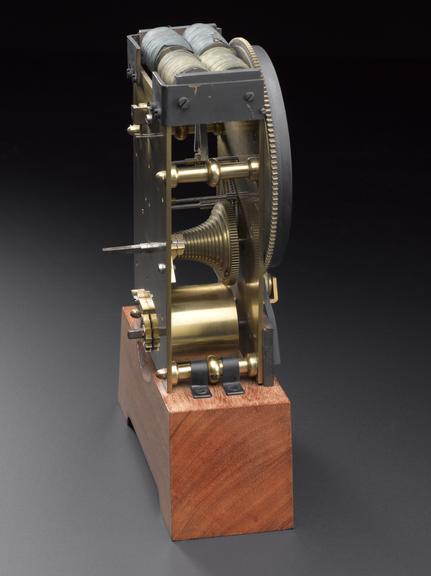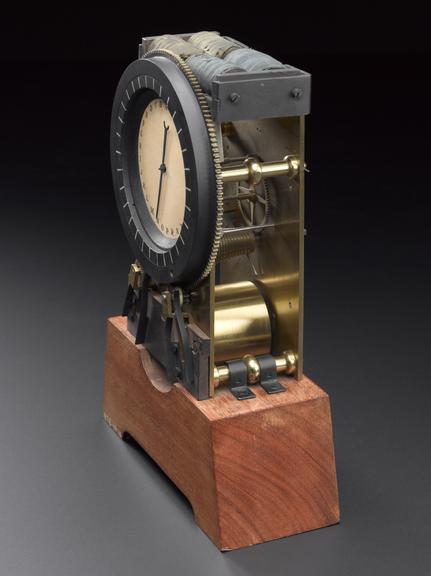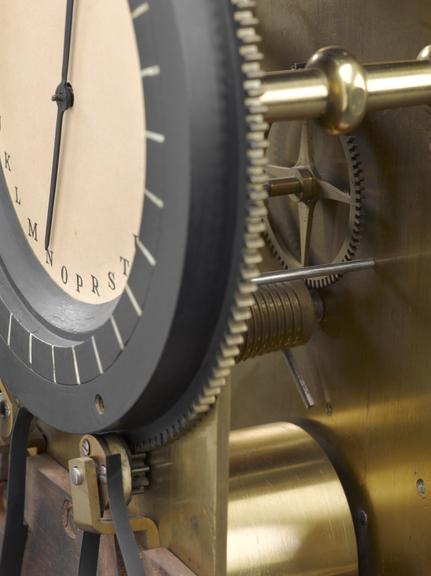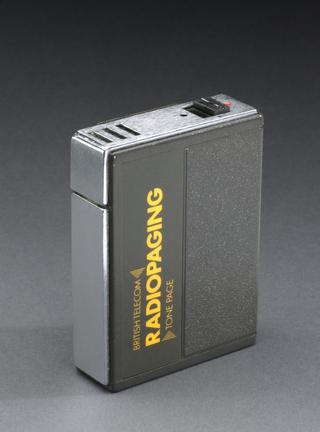
Cooke and Wheatstone's A.B.C. telegraph receiver, 1839-1840
- maker:
- William Fothergill Cooke








Cooke and Wheatstone's A.B.C. Telegraph Receiver, probably made by Sir William Cooke, England, 1839-1840. Only known example of this type of telegraph pointer. Knob for rotating the dial has been broken off.
Cooke and Wheatstone's A.B.C. Telegraph Receiver, probably made by Sir William Cooke, England, 1839-1840. Only known example of this type of telegraph pointer.
This was one of the earliest 'ABC' type telegraph transmitters and was invented by Sir William Cooke around 1839. It was designed to be both a transmitter and a receiver. Rotation of the outer dial was used to pick and transmit characters using make-and-break contacts beneath the dial. This example is not quite complete as the knob for rotating the dial has been broken off. The pointer was used when signals were received, and rotated depending on the number of signals received. Instruments like this were tried on the original telegraph line between Paddington and West Drayton around 1840, but were found to not be as reliable or fast as needle instruments.
Details
- Category:
- Telecommunications
- Object Number:
- 1876-1418
- Materials:
- wood (unidentified), copper (alloy), textile, iron and paper (fibre product)
- Measurements:
-
overall: 280 mm x 180 mm x 60 mm, 4.1 kg
- type:
- telegraph
- credit:
- From Reid Brothers




